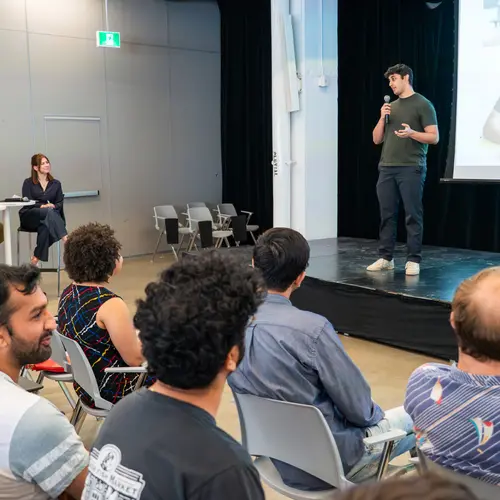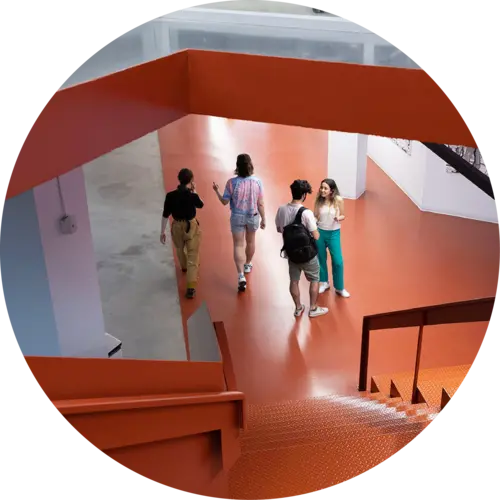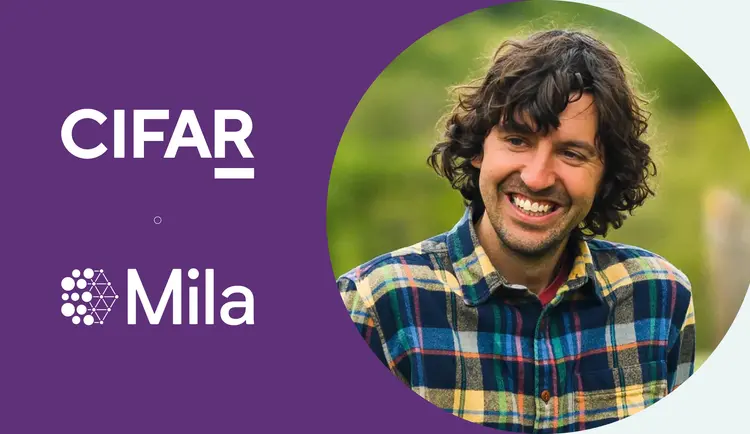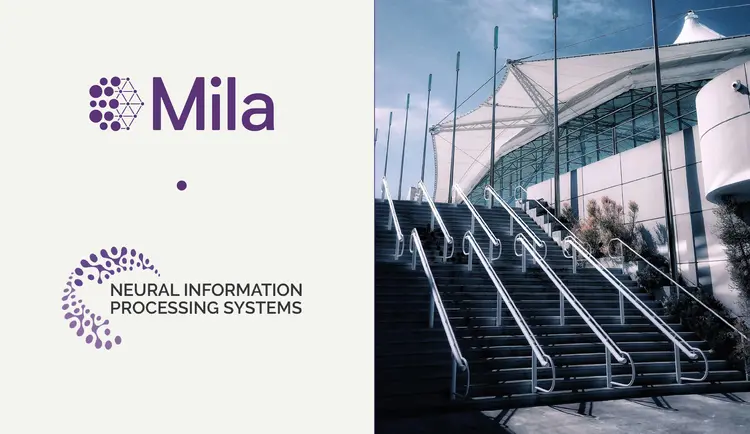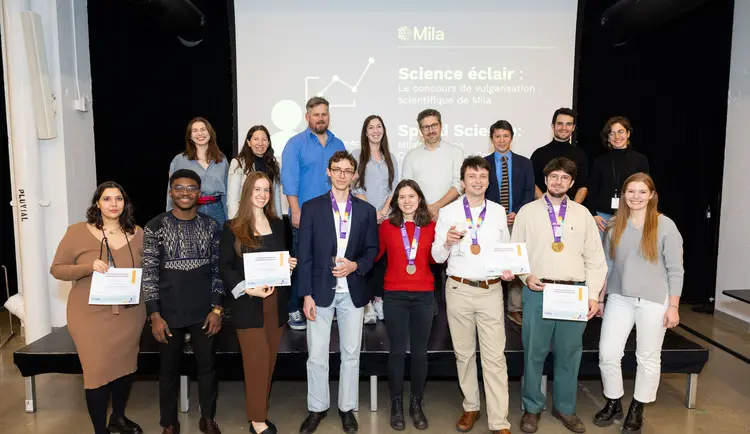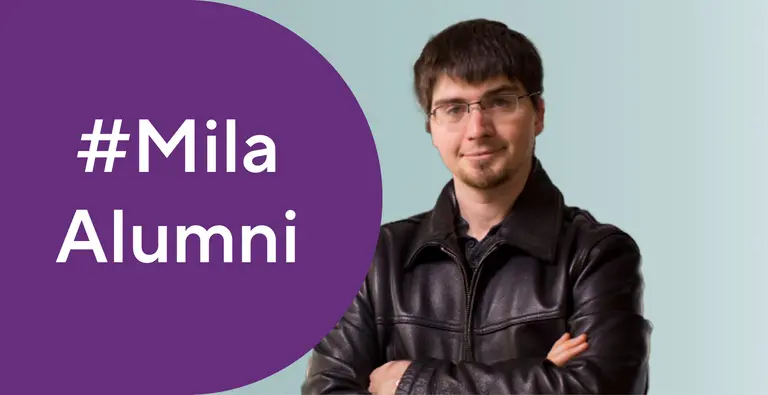
We recently had the opportunity to hear from Ian Goodfellow, a Mila Alumni trained in machine learning, and currently working at GoogleDeep Mind, hoping to help other institutions to make fusion power generation a reality.
Tell us about your academic and professional path.
I went to Stanford University for my bachelors degree. I did a lot of independent study research there on the Stanford AI Robot with Andrew Ng. This was mostly computer vision with traditional machine learning.
While at Stanford, I got the opportunity to work on deep learning with my colleague Ethan.
By the time I was done with my undergrad and applying to my PhD, I applied to several different schools but I was really interested in Geoff and Yoshua’s labs. Yoshua offered me a spot in his lab and it was a very easy decision for me.
After graduating, I worked at Google Brain, where I led the Google Brain Red Team studying adversarial machine learning. I was a co-author of one of the first two papers that independently discovered adversarial examples, and Christian Szegedy and I co-invented adversarial training for robustness to adversarial examples. I also worked with collaborators including Nicolas Papernot, Kunal Talwar, Ulfar Erlingsson, and Martin Abadi on a variety of privacy and security efforts, including some of the first publications on differentially private training mechanisms for neural networks.
I worked as Director of Machine Learning in Apple’s Special Projects Group from 2019-2022. I felt like working as a team on a confidential project led to a more collaborative atmosphere where we were all cooperating to make sure our shared project succeeded.
For a long time I’d grown increasingly concerned about climate change and I had been gradually trying to find a way to get more involved. The sudden turning point was when DeepMind published a paper about controlling nuclear fusion reactors with reinforcement learning. Shortly after learning about this, I joined the DeepMind (now Google DeepMind) and am still working on both fusion power generation and some LLM factuality research today.
How did your interest in AI come to be? What first drew you in?
I had several waves of increasing interest in AI:
- As a teenager, I read a lot of layperson science content, like Scientific American. It was common for articles in this context in the early 2000s to predict that AI and nanotech would be the most important technologies of the 21st century. I wanted to get involved to make sure that they would be used beneficially. I was concerned about misuse of AI from early on due to cyberpunk fiction depicting AI for surveillance and totalitarian government, like in the excellent computer game Deus Ex.
- At an internship of the National Institutes of Health in 2006, I encountered my first machine learning model, for automatically classifying events in EEG data. I was interested in that, and told my academic advisor about it when I came back. I changed my major to computer science, started taking all of Andrew Ng’s classes, and spent my next several summers interning either on his robotics project at Stanford or at the closely related Willow Garage robot startup near campus.
- I wasn’t really fully committed to AI research until I found out about deep learning from my friend Ethan. After that, the question of “how do we get deep learning to work?” was focused enough to keep me engaged.
Is there a specific topic that you wish to go into more in depth? What are you working on now?
Right now I’m working on AI for controlling fusion power generators. You can read a blog post about how RL can help with fusion power generation here.
In general, a key component of machine learning performance is data, or for RL, the simulator. For the fusion effort, I’m working on simulation. Most of what I do is actually writing numerical differential equation solver code, so I’m not actually working on machine learning directly. My experience with implementing a lot of numerically fussy Monte Carlo algorithms and optimization algorithms has set me up well for writing numerical differential equation solvers, and they are important for being able to model everything we need to model to train the RL agent.
Tell us a bit about your time at Mila.
This was before Mila existed, so I was a student of UdeM / LISA. Deep learning and AI were also very different. At that point in time, because deep learning didn’t really work yet, research was much more open ended, and we tried out several highly different philosophies constantly. I actually miss this time —there was more of a sense of curiosity, the people working on AI were doing it for love of knowledge, there was more of a sense of freedom to try different things, and less of a sense that our work had consequences.
One thing I really loved about Mila was the community spirit and how people would come together to rush a paper. Because I had the idea for GANs so late (about two weeks before the deadline of the conference that was then still called NIPS) it really took a large group to rush experiments showing that they worked on different datasets, proving that they learned to represent the correct distribution, etc. I’m very grateful to my friends for dropping everything and rushing to make this paper happen.
Maybe one other thing worth mentioning about LISA in my time there was that LISA / Yoshua were really leaders in the idea of academic labs developing open source software and contributors getting academic credit for this. LISA’s software products were a big part of the sense of fun and intellectual freedom, because it was very easy to try out radically different new ideas fast.
What advice would you give to new Mila students?
- Think about how to make sure your work is beneficial and consider different kinds of interdisciplinary approaches. For example, I’m working in power generation now, where AI is just a small piece of the puzzle. As another example, there is also a lot of need for understanding of AI in law and public policy.
- Learn to manage your emotions and manage your expectations. Research is hard and it can be tempting to compare yourself to the most successful people in your field and compare only to their successes (because they usually don’t broadcast their failures, so you don’t even know about those). It’s important not to emotionally beat yourself up too much when things don’t go your way. The very difficult thing is that you still need to learn the practical skill of figuring out when to cut off a research direction that isn’t working out.
- Step up and do a lot of the less glamorous work that’s needed to achieve your goals (e.g. while I was at LISA I did a ton of work on Theano and Pylearn2, and now I’m working on simulation rather than working on the core RL agent for fusion) but also make sure that you advocate for yourself and get credit for this work and the results it enables.
- Bruce Lee said “I fear not the man who has practiced 10,000 kicks once, but I fear the man who has practiced one kick 10,000 times.” For us machine learning people, this means to be very comfortable and natural with Python programming, numerical programming, linear algebra, and probability.
- Learn to identify when you should seek out collaborations. If you find yourself needing a kick you have not practiced 10,000 times, find someone who has. Examples include papers where I’m a co-author with Jean-Pouget Abadie (game theory) or Kunal Talwar (differential privacy).
What is the biggest challenge that you think AI faces today?
The biggest challenge is that AI has become a field with consequences. AI used to be something that only AI researchers cared about. Now it affects everyone and a lot of powerful people and institutions want to steer it in different directions, good and bad. As a scientist it’s hard to figure out how to navigate this more complicated world responsibly.
What are you looking forward to as AI continues to develop?
Since I’ve been a teenager, the dream has been to use AI to achieve things that humans could not achieve, in terms of advancing science and medicine. I’m hoping my colleagues at GDM and I will help other institutions to make fusion power generation a reality. I’m also excited about Max Welling’s materials science startup, CuspAI, which will use machine learning to develop new materials for carbon capture. I’m hoping for other advances in medicine too.
Do you have any recent achievements you’d like to share?
The first of my contributions to Google DeepMind’s fusion effort to become public is now available. It’s an open source plasma physics simulator available here and described in this arxiv paper.
